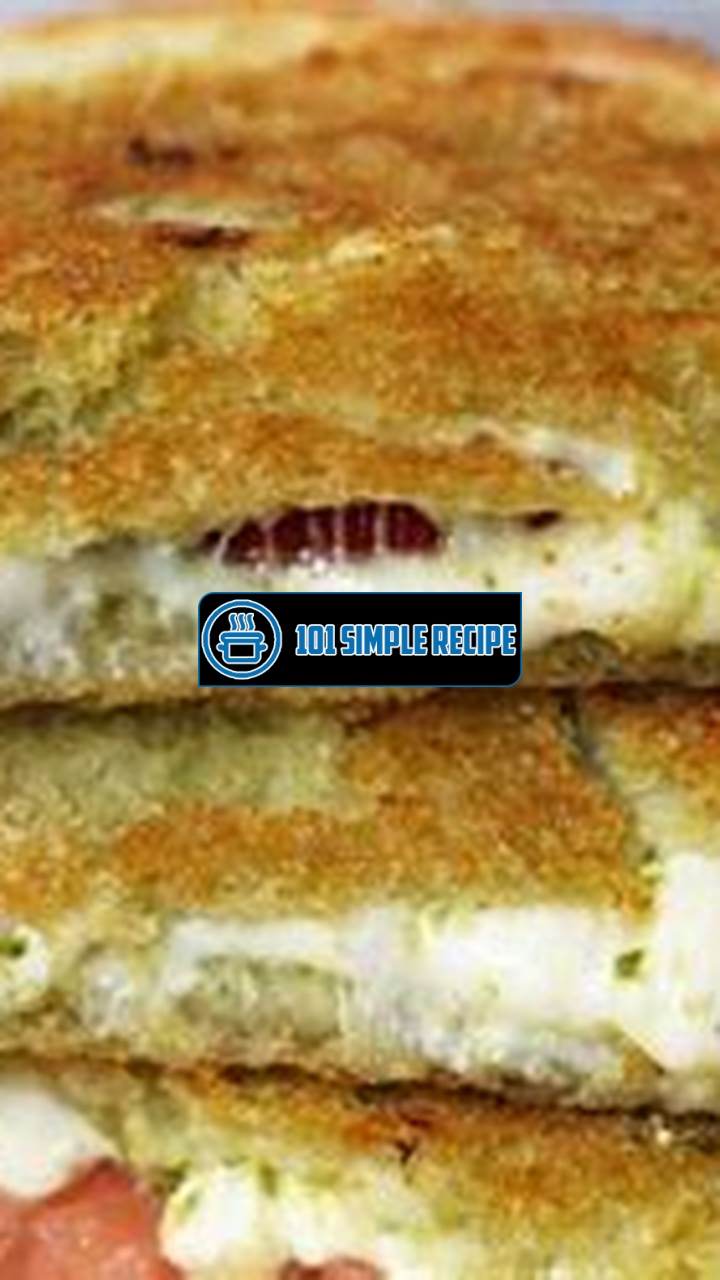Are you in the mood for a delectable and satisfying sandwich? Look no further than this mouthwatering recipe for Delicious Ciabatta Panini Bread. With its crispy exterior and soft, chewy interior, this savory bread is the perfect base for creating your own gourmet sandwiches. Whether you’re a fan of classic fillings like ham and cheese or you prefer to get creative with unique flavor combinations, this recipe will not disappoint. Get ready to tantalize your taste buds with each and every bite!

Understanding Ciabatta Panini Bread
Explore the origins and characteristics of ciabatta panini bread, a popular Italian sandwich bread.
Ciabatta panini bread is a delicious and versatile type of bread that is commonly used to make sandwiches. It is a staple in Italian cuisine and has gained popularity around the world for its unique texture and flavor. Understanding the origins and characteristics of ciabatta panini bread can help you appreciate and enjoy this tasty bread even more.
What is Ciabatta Panini Bread
Ciabatta panini bread is a type of Italian bread that was first created in the 1980s. It is characterized by its long, rectangular shape and crispy crust. The word “ciabatta” means “slipper” in Italian, which refers to the bread’s flat and elongated shape.
What sets ciabatta panini bread apart from other bread varieties is its unique dough. It is made using a wet and sticky dough that requires a longer fermentation process. This results in a bread with a light and airy texture, perfect for creating panini sandwiches.
The dough for ciabatta panini bread is typically made with flour, water, salt, and yeast. Some recipes may also include olive oil for added flavor and a softer crust. The dough is mixed and left to rise for several hours, allowing the yeast to ferment and create air bubbles that give the bread its signature texture.
The History of Ciabatta Panini Bread
The history of ciabatta panini bread can be traced back to the northern regions of Italy, particularly the provinces of Veneto and Lombardy. It was created by bakers as an alternative to the traditional round-shaped bread loaves.
Legend has it that ciabatta panini bread was invented by bakers who wanted to create a bread that could be easily transformed into sandwiches. The dough’s sticky consistency and long fermentation process allowed it to hold up well to fillings and grilling, making it ideal for panini sandwiches.
Over time, ciabatta panini bread gained popularity throughout Italy and eventually spread to other parts of the world. Today, it is a common feature in sandwich shops, cafes, and restaurants, where it is used to make a variety of delicious panini sandwiches.
The Texture and Flavor of Ciabatta Panini Bread
The unique texture and flavor of ciabatta panini bread make it a perfect choice for sandwiches and other dishes. The long fermentation process and wet dough result in a bread with a light and airy interior. It has large air pockets distributed throughout the loaf, giving it a spongy and chewy texture.
The crust of ciabatta panini bread is thin and crispy, providing a delightful contrast to its soft interior. When toasted or grilled for sandwiches, the crust becomes even crispier, adding a satisfying crunch to every bite.
In terms of flavor, ciabatta panini bread has a mild and slightly tangy taste. It pairs well with a variety of fillings and condiments, allowing you to customize your sandwiches to your liking. Whether you prefer classic deli meats and cheeses or more adventurous combinations, ciabatta panini bread provides a delicious base for your sandwich creations.
So next time you’re craving a tasty sandwich, consider using ciabatta panini bread. Its origins, unique texture, and delightful flavor make it a perfect choice for any sandwich lover.
Choosing the Right Ingredients
Creating delicious ciabatta panini bread requires the use of high-quality ingredients that bring out the savory flavors and perfect texture. Each ingredient plays a crucial role in the overall taste and consistency of the bread. Let’s delve into the essential components that make this recipe a mouthwatering delight.
The Role of Flour
The key to achieving the perfect ciabatta panini bread lies in selecting the right type of flour. Traditionally, ciabatta bread is made with a combination of all-purpose flour and durum wheat flour. The all-purpose flour provides the necessary gluten to give the bread its chewy texture, while the durum wheat flour adds a distinctive nutty flavor. You can also experiment with different flours like whole wheat or rye to add more depth to your bread.
Fun fact: Did you know that “ciabatta” means “slipper” in Italian? This bread got its name due to its resemblance to a slipper shape.
Understanding Yeast and Leavening Agents
Yeast is a crucial ingredient in ciabatta panini bread, as it helps the dough rise and gives the bread its airy texture. Active dry yeast or instant yeast can be used in this recipe. If using active dry yeast, it needs to be proofed in warm water before adding it to the flour. On the other hand, instant yeast can be mixed directly into the dry ingredients.
Pro tip: To ensure a successful rise, make sure the yeast is fresh and not expired. The water used for proofing the yeast should be at a warm temperature, around 110°F (43°C), to activate the yeast effectively.
Enhancing the Flavor with Olive Oil and Herbs
Olive oil and herbs are the secret ingredients that elevate the flavor profile of ciabatta panini bread. A generous drizzle of extra virgin olive oil not only adds richness but also helps to keep the bread moist. You can also infuse the olive oil with herbs like rosemary, thyme, or basil to impart a delightful aroma to the bread.
Tip: When adding herbs to the dough, finely chop them to distribute their flavors evenly. You can also sprinkle some herbs on top of the bread before baking for an extra burst of freshness.
By carefully selecting the right flour, understanding yeast, and incorporating olive oil and herbs, you can create a sensational ciabatta panini bread that will have everyone asking for more. So, roll up your sleeves, gather these essential ingredients, and embark on a culinary adventure to bake this delightful bread!
The Ciabatta Panini Bread Recipe
Follow a step-by-step guide to making ciabatta panini bread from scratch.
Mixing and Kneading the Dough
When making ciabatta panini bread, the first step is to mix and knead the dough. The key to achieving a perfect texture and flavor lies in this initial stage. Start by combining strong white bread flour, salt, yeast, and olive oil in a large mixing bowl. Mix well until all the ingredients are evenly distributed.
Important: Be sure to use fresh yeast for optimal results.
Now, gradually add warm water to the mixture while stirring continuously. The water should be warm to the touch but not hot, as excessive heat can kill the yeast. Incorporate the water until a sticky dough forms. Avoid overmixing, as this can result in a dense bread.
Once the dough is formed, transfer it onto a floured surface and begin kneading. Use the heel of your hand to push the dough away from you, then fold it back and repeat. Kneading should be done for at least 10 minutes or until the dough becomes smooth and elastic.
When you’re done kneading, shape the dough into a ball and place it in a lightly oiled bowl. Cover with a clean kitchen towel or plastic wrap and let it rest for about 1-2 hours, or until it has doubled in size. This process allows the dough to rise, developing those lovely air pockets that give ciabatta its signature texture.
Rising and Shaping the Dough
Once the dough has doubled in size through the rising process, it’s time to shape it before baking. Gently punch down the dough to release any air bubbles that may have formed. Transfer it onto a floured surface and divide it into equal portions, depending on your desired bread size.
Note: Smaller portions are great for individual-sized paninis, while larger portions are ideal for sharing.
Take each portion of dough and stretch it out into a rectangular shape. Fold each end of the rectangle towards the center, overlapping them slightly. This folding technique creates a rustic, irregular shape that is characteristic of ciabatta bread. Place the shaped dough onto a baking tray lined with parchment paper.
Baking and Achieving the Perfect Crust
The final step in making ciabatta panini bread is baking it to perfection. Preheat your oven to 450°F (230°C) and place a shallow pan of water on the bottom rack. The steam created by the water will help achieve that crispy crust we all love.
Before placing the bread in the oven, lightly dust the top with flour or sprinkle it with your favorite seeds for added flavor and texture. Gently make a few slashes across the top surface of each loaf with a sharp knife to allow for expansion during baking.
Bake the bread for approximately 20-25 minutes or until it turns golden brown with a crusty exterior. To check for doneness, tap the bottom of the loaf; if it sounds hollow, it’s ready to be taken out of the oven.
Once baked, allow the bread to cool on a wire rack for a few minutes before slicing it and enjoying the delicious aroma and taste of freshly baked ciabatta panini bread.
Tips and Techniques for Success
When it comes to making delicious ciabatta panini bread, there are a few tips and techniques that can help ensure your recipe turns out perfectly every time. Whether you’re a seasoned baker or just starting out, following these guidelines will help you achieve a savory and satisfying result.
Proper Dough Handling and Shaping
1. Avoid overmixing: When preparing the dough for your ciabatta panini bread, be careful not to overmix it. Overmixing can result in a dense and tough texture. Instead, mix the ingredients until they are just combined.
2. Use a stand mixer: While you can certainly knead the dough by hand, using a stand mixer with a dough hook attachment can make the process easier and more efficient. The mixer will help develop the gluten in the dough, resulting in a lighter and airier bread.
3. Shape the dough gently: After the initial rise, it’s important to handle the dough gently when shaping it into loaves. Avoid overworking the dough, as this can deflate the air pockets that give ciabatta bread its characteristic texture.
4. Try different shaping techniques: To add some variety to your ciabatta panini bread, experiment with different shaping techniques. You can create traditional loaves, mini rolls, or even individual-sized breads for sandwiches.
5. Use a baking stone or steel: For a crispier crust, consider baking your ciabatta bread on a preheated baking stone or steel. These tools absorb and retain heat, helping to create a beautiful golden crust.
The Importance of Resting and Proofing
1. Allow for adequate resting time: After the initial mixing and kneading, the dough needs to rest. This allows the gluten to relax and the yeast to ferment, resulting in a lighter and more flavorful bread. Plan for at least an hour of resting time.
2. Master the art of proofing: Proofing is the final rise of the dough before baking. It is crucial for developing the characteristic airy texture of ciabatta bread. Proper proofing involves creating a warm and humid environment for the dough to rise. You can achieve this by placing the dough in a covered bowl or using a proofing box.
3. Don’t rush the proofing process: It’s important to be patient during the proofing stage. Rushing the process can result in a dense and underwhelming bread. Allow the dough to double in size before proceeding to the baking stage.
Creating Variations and Flavors
1. Add herbs and spices: To enhance the flavor of your ciabatta panini bread, consider adding your favorite herbs and spices to the dough. Dried rosemary, basil, or even garlic powder can add a delicious twist.
2. Experiment with different toppings: Once your ciabatta bread is baked, you can get creative with the toppings. Brushing the bread with olive oil and sprinkling it with sea salt or grated Parmesan cheese can take your panini sandwiches to the next level.
3. Incorporate fillings: If you want to make your ciabatta panini bread even more flavorful, consider incorporating fillings into the dough. Diced olives, sun-dried tomatoes, or even small cubes of cheese can add a burst of flavor and texture.
4. Explore gluten-free options: If you’re following a gluten-free diet, don’t worry! You can still enjoy Ciabatta panini bread by using gluten-free flour blends and following the same techniques mentioned above. Experiment with different blends to find the perfect texture and taste.
By following these tips and techniques, you’ll be well on your way to creating mouthwatering ciabatta panini bread that will impress your family and friends. Remember to have fun and don’t be afraid to experiment with different flavors and variations. Happy baking!
Serving and Enjoying Ciabatta Panini Bread
When it comes to serving and enjoying freshly baked ciabatta panini bread, there are several delightful ways to elevate your dining experience. Whether you are hosting a casual brunch or preparing a quick and delicious lunch, this Italian bread is versatile and pairs well with a variety of ingredients. Let’s explore the best ways to serve and enjoy this savory bread.
Pairing Options for Delicious Panini Sandwiches
One of the most popular ways to enjoy ciabatta panini bread is by creating mouthwatering sandwiches. The key is to choose the right ingredients that complement the bread’s robust flavor and chewy texture. Here are a few pairing options to consider:
- Classic Italian Panini: Layer thin slices of prosciutto, mozzarella, and fresh basil leaves on the bread. Grill the sandwich until the cheese melts and the bread turns golden brown. Serve with a side of marinara sauce for dipping.
- Mediterranean Veggie Panini: Fill the ciabatta bread with roasted red peppers, sliced tomatoes, cucumber, feta cheese, and a drizzle of balsamic glaze. Grill until the cheese softens and the bread becomes crispy.
- Spicy BBQ Chicken Panini: Spread barbecue sauce on the bread and top it with grilled chicken, caramelized onions, pepper jack cheese, and pickled jalapeños. Grill until the cheese melts and the bread gets a crunchy exterior.
Storage and Reheating Tips
If you have any leftover ciabatta panini bread, it’s important to store it properly to maintain its freshness and flavor. Follow these storage and reheating tips:
- Storage: Wrap the bread tightly in plastic wrap or store it in an airtight container to prevent it from drying out. Keep it at room temperature for up to two days or freeze it for longer shelf life.
- Reheating: To bring back the freshly baked taste and texture, preheat your oven to 350°F (175°C). Wrap the bread in aluminum foil and warm it in the oven for about 10 minutes. Alternatively, you can use a panini press to heat the bread and create a crispy exterior.
Creative Uses for Leftover Ciabatta Panini Bread
Don’t let any leftover ciabatta panini bread go to waste. Get creative and turn it into something new and delicious! Consider these ideas:
- Ciabatta Croutons: Cut the bread into small cubes, drizzle with olive oil, sprinkle with your favorite seasonings, and bake until crispy. Use these homemade croutons to top soups, salads, or even sprinkle over pasta dishes.
- Ciabatta French Toast: Slice the bread into thick pieces, soak in a mixture of eggs, milk, and vanilla extract, and cook on a buttered skillet until golden brown. Serve with maple syrup and fresh fruits for a decadent breakfast or brunch.
- Ciabatta Panzanella Salad: Toss cubed ciabatta bread with ripe tomatoes, cucumber, red onion, fresh basil, and a tangy vinaigrette. Allow the flavors to meld together for a while before enjoying this refreshing and hearty salad.
With these serving, pairing, storage, and creative ideas, you can fully indulge in the deliciousness of ciabatta panini bread. Let your culinary creativity shine and enjoy this Italian delight in various ways!
If you are looking for a delicious recipe using ciabatta bread, try this ciabatta panini bread recipe. It’s a perfect combination of crispy bread and flavorful fillings. You’ll love the crunch of the ciabatta bread when it’s toasted to perfection.
Frequently Asked Questions
Thank you for reading our article on ciabatta panini bread recipe! We hope you found it helpful and inspiring to try out this delicious recipe in your kitchen. If you have any further questions or need clarification on any step, please refer to the FAQs below:
| No. | Questions | Answers |
|---|---|---|
| 1. | Can I substitute all-purpose flour with whole wheat flour? | Yes, you can substitute all-purpose flour with whole wheat flour, but it may result in a denser texture. Adjust the liquid content accordingly to achieve the desired consistency. |
| 2. | Can I freeze the ciabatta panini bread? | Absolutely! Once cooled, you can wrap the ciabatta panini bread tightly in plastic wrap or place it in freezer bags. It can be stored in the freezer for up to three months. To use, simply thaw at room temperature and reheat before serving. |
| 3. | What toppings or fillings go well with ciabatta panini bread? | Ciabatta panini bread is versatile and pairs well with various toppings and fillings. Some popular options include grilled vegetables, melted cheese, roasted chicken, pesto sauce, and sliced tomatoes. Get creative and experiment with your favorite ingredients! |
| 4. | Can I use a panini press to make this recipe? | Yes, a panini press is a great tool to achieve perfectly grilled ciabatta panini bread. Simply follow the recipe instructions to prepare the bread dough, then use the panini press to grill the assembled sandwich until golden and crispy. |
| 5. | How long does the dough need to rise? | The dough needs to rise for approximately 1 to 2 hours, or until it has doubled in size. This allows the yeast to ferment and create the characteristic air pockets in ciabatta bread. |
| 6. | Can I add herbs or spices to the dough? | Absolutely! Adding herbs or spices to the dough can enhance the flavor of your ciabatta panini bread. Popular options include rosemary, garlic, oregano, or even chili flakes for a spicy twist. |
Come Back for More Delicious Recipes!
Thank you for taking the time to read our ciabatta panini bread recipe article. We hope you enjoyed it and feel inspired to try making this delectable bread at home. Remember, the key to a perfect ciabatta panini bread lies in patience, quality ingredients, and lots of love. Don’t forget to bookmark our website and visit us again for more mouthwatering recipes and culinary inspiration. Happy baking!
Jump to Recipe
Ciabatta Panini Bread Recipe

Learn how to make delicious and crispy ciabatta panini bread at home with this easy-to-follow recipe.
- 3 cups all-purpose flour
- 2 teaspoons active dry yeast
- 2 teaspoons salt
- 1 1/2 cups warm water
- 2 tablespoons olive oil
- In a large mixing bowl, combine the all-purpose flour, active dry yeast, and salt. Mix until well combined.
- Gradually add the warm water and olive oil to the dry ingredients. Mix until a sticky dough forms.
- Transfer the dough onto a floured surface and knead for about 10 minutes, or until the dough becomes smooth and elastic.
- Place the kneaded dough in a greased bowl and cover it with a clean kitchen towel. Allow it to rise in a warm place for 1 to 2 hours, or until it has doubled in size.
- Once the dough has risen, gently deflate it and transfer it onto a floured surface. Shape it into a rectangle.
- Preheat the oven to 425°F (220°C). Place the shaped dough onto a baking sheet and bake for 20-25 minutes, or until golden brown and crispy.
- Remove the ciabatta panini bread from the oven and allow it to cool for a few minutes. Slice it into individual portions and use it to make delicious paninis or sandwiches.
- Your homemade ciabatta panini bread is now ready to be enjoyed! Serve it warm or use it in your favorite recipes.






